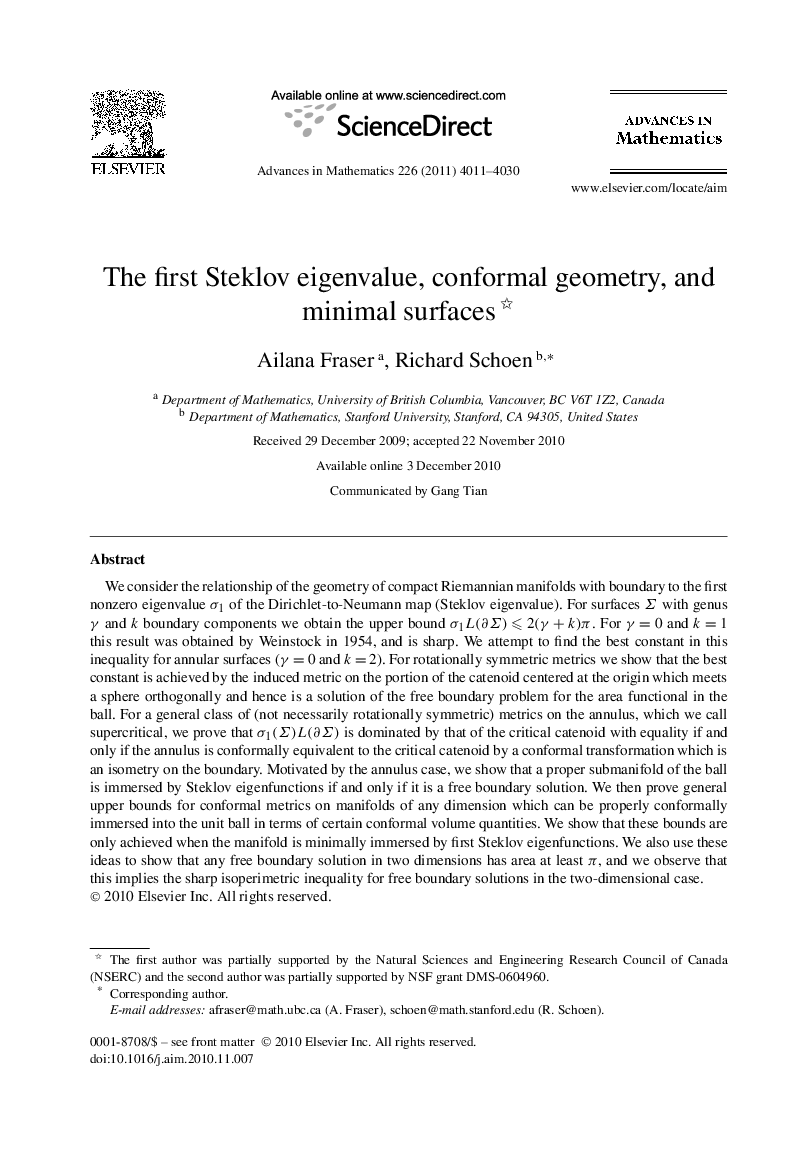| Article ID | Journal | Published Year | Pages | File Type |
|---|---|---|---|---|
| 6426154 | Advances in Mathematics | 2011 | 20 Pages |
We consider the relationship of the geometry of compact Riemannian manifolds with boundary to the first nonzero eigenvalue Ï1 of the Dirichlet-to-Neumann map (Steklov eigenvalue). For surfaces Σ with genus γ and k boundary components we obtain the upper bound Ï1L(âΣ)⩽2(γ+k)Ï. For γ=0 and k=1 this result was obtained by Weinstock in 1954, and is sharp. We attempt to find the best constant in this inequality for annular surfaces (γ=0 and k=2). For rotationally symmetric metrics we show that the best constant is achieved by the induced metric on the portion of the catenoid centered at the origin which meets a sphere orthogonally and hence is a solution of the free boundary problem for the area functional in the ball. For a general class of (not necessarily rotationally symmetric) metrics on the annulus, which we call supercritical, we prove that Ï1(Σ)L(âΣ) is dominated by that of the critical catenoid with equality if and only if the annulus is conformally equivalent to the critical catenoid by a conformal transformation which is an isometry on the boundary. Motivated by the annulus case, we show that a proper submanifold of the ball is immersed by Steklov eigenfunctions if and only if it is a free boundary solution. We then prove general upper bounds for conformal metrics on manifolds of any dimension which can be properly conformally immersed into the unit ball in terms of certain conformal volume quantities. We show that these bounds are only achieved when the manifold is minimally immersed by first Steklov eigenfunctions. We also use these ideas to show that any free boundary solution in two dimensions has area at least Ï, and we observe that this implies the sharp isoperimetric inequality for free boundary solutions in the two-dimensional case.
